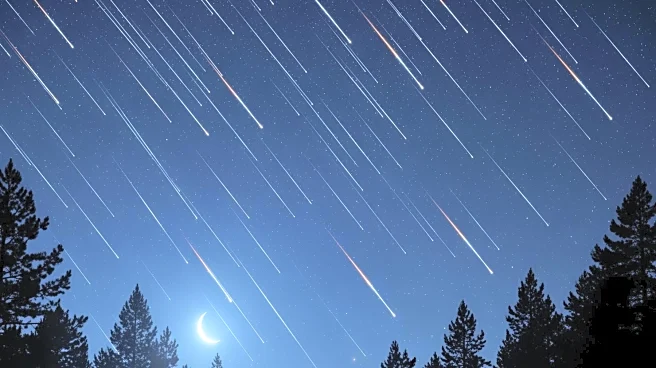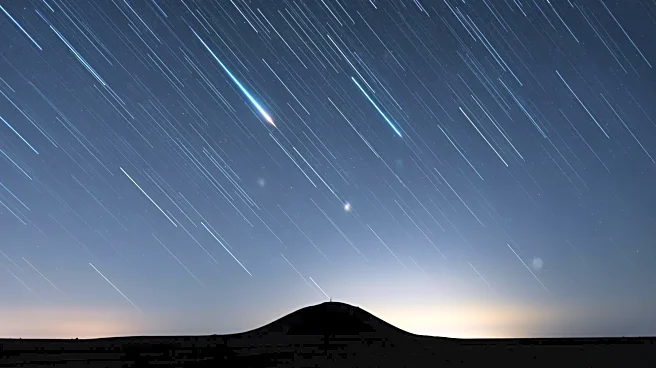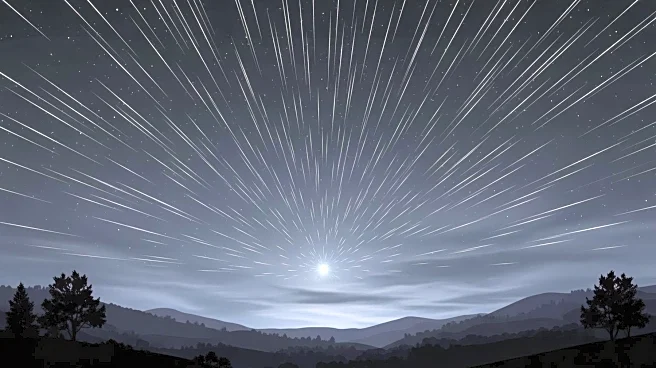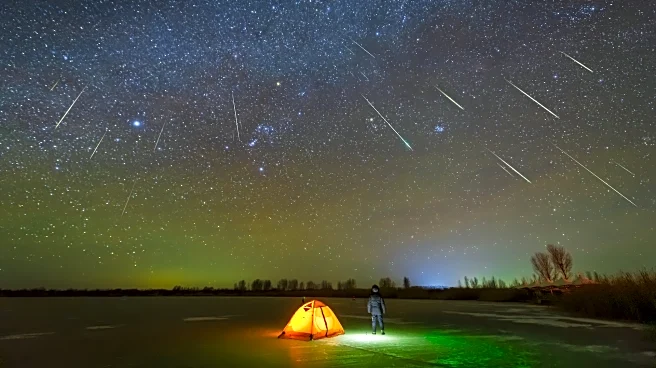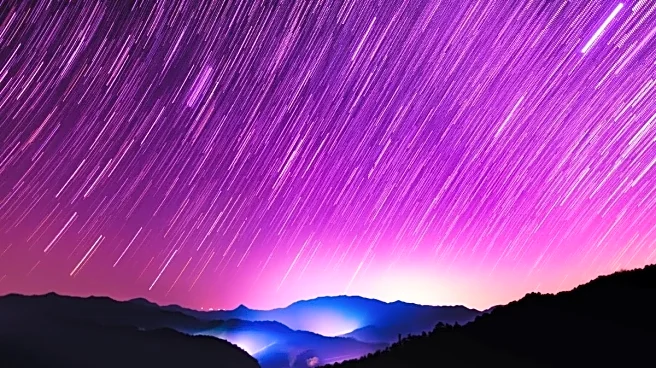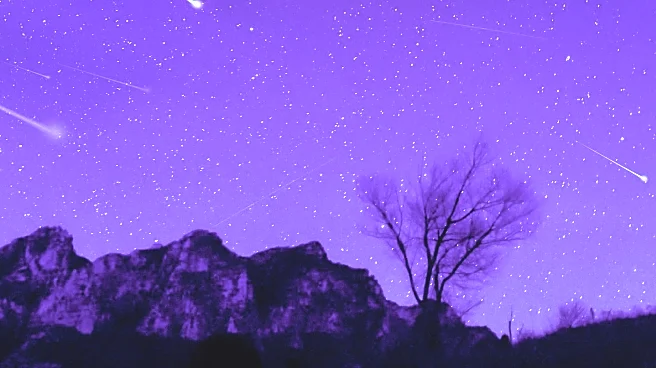What's Happening?
The Leonid meteor shower is set to peak tonight, offering a celestial display as Earth passes through the debris trail of comet 55P/Tempel-Tuttle. The shower, active from November 3 to December 2, will
reach its peak overnight on November 16-17, with up to 10 meteors per hour visible. These meteors, often referred to as 'shooting stars,' occur when fragments of ancient comets enter Earth's atmosphere at high speeds, creating bright fiery displays. The best viewing time is late at night on November 16 through the early hours of November 17, when the constellation Leo is high in the sky.
Why It's Important?
The Leonid meteor shower is a significant event for astronomy enthusiasts and the general public, providing an opportunity to witness a natural spectacle. While this year's shower is expected to be less intense, with fewer meteors per hour, it still offers a chance to observe bright meteors and fireballs. The event highlights the ongoing interest in celestial phenomena and the importance of understanding cometary debris and its interaction with Earth's atmosphere. It also underscores the role of organizations like the American Meteor Society in providing information and guidance for observing such events.
What's Next?
Observers are advised to find locations with minimal light pollution and to allow their eyes to adjust to the dark for optimal viewing. The Leonid meteor shower is known for occasional meteor storms, though such an event is not expected this year. Future observations and studies of the Leonids will continue to enhance understanding of cometary debris and its impact on Earth's atmosphere.
